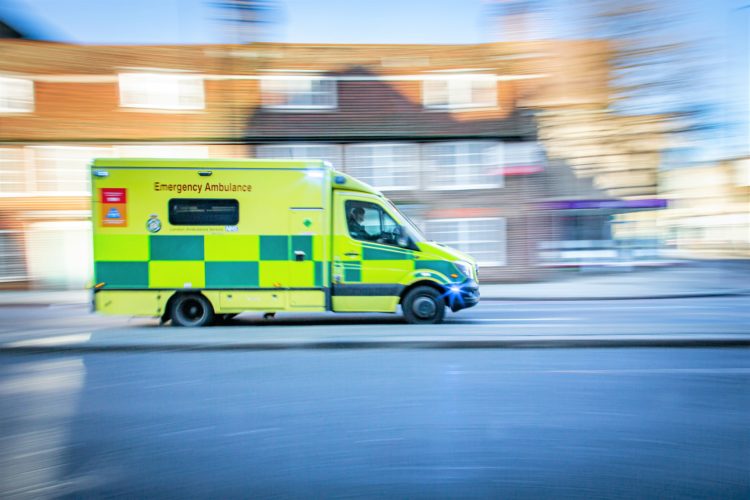
Across the country Britain’s emergency departments are taking care of people injured on our roads – one consultant shares his experience working on diagnosing some of those most seriously affected.
Khurram Iftikhar has been a consultant in emergency medicine and major trauma at Sheffield Hospital for the last three years.
He has been working as a consultant for almost 10 years, he trained in London and spent 5 years in Cambridge before moving to Sheffield.
Sheffield is the major trauma centre for South Yorkshire, and they can see on average between three to five major traumas every day, with weekends being even busier.
Roughly half of those are in relation to a road traffic accident, involving motorcycles, cycles, cars and pedestrians.
In his role Khurram works in the diagnostic phase of rehabilitation, but as part of the major trauma team he does spend time with the more seriously injured patients across the case of their hospital stay.
“We see the patients initially, arrange their initial diagnostics, intubate them if necessary, give them blood if they’re bleeding significantly, then most of them will go through the CT scanner,” he said.
He said in the last ten years easier and early access to whole body CT scans has revolutionised early diagnostics.
“A CT scan will tell us the complete pattern of injuries, including any internal injuries.
“Going back to 10 to 15 years ago, the access to CT wasn’t as easy as it is today, now we can get a very early diagnosis.”
Having worked in this field for almost 14 years Khurram said it was still hard breaking the news of their injuries to patients, but especially to their family members who are always in shock.
“Especially with someone seriously injured, say if they’ve needed to be intubated and their unconscious and they have severe brain injury, certainly in that first few hours we can’t give a definite prognosis as to what’s going to happen in the future.
“The relatives always ask, what are the chances they’ll walk again, what are the chances they’ll wake up and you never know the answer to that, that part is difficult in some cases.”
Some of his patients can be in hospital for months, others require a short stay and surgery, while more minor injuries are often discharged directly from A&E
For the ones who are admitted to hospital Khurram said it can mentally be very difficult
“You definitely see a lot of these patients get acutely depressed and have a grief reaction to what has happened.
“A lot of them put up a wall and put on a brave face, but you can see this will affect them forever now.”
He said these patients are often coming to terms with a life which may never return to normal, they are unable to return to work, play the sports they once played or take part in certain activities.
“The patients that will lose their independence they’re the ones that really stick with me, and that tends to be the ones who suffer from spinal injuries.”
He said in particular he has had young patients who were normally fit and well prior to the accident who are now left paralysed.
“The injuries where we can’t do anything to alter the outcome, those are the ones that stick in my mind and they’re the saddest ones because a lot of the time there’s nothing we can do.
“That injury has happened at the moment of impact, there’s often no recovery from that and the rehabilitation process can be painful and so prolonged.”
Spinal injuries can vary from being devastating to being a simple fracture that will heal over time.
Being so close to those impacted by accidents has certainly changed the way Khurram behaves when he’s on the road.
“When I was a lot younger, I was thinking of getting into motorcycling, but my first few weeks in A&E sort of put that to bed,” he said.
“The things that we saw, I thought oh, no, I don’t ever want to get on a motorcycle, not even as a pillion passenger.”
He said he sees motorcyclists coming in with anything from head injuries, to spinal, chest and pelvic injuries.
“The most common injury in most trauma are head injuries; it accounts for the highest morbidity rate.
“Even for the survivors, the ones with a severe head injury will suffer from the greatest disability.”
Often the emergency team don’t see the drivers who were involved in a collision, particularly in the case of motorcyclists, cyclists or pedestrians.
“But for them this will also have a life changing impact, it can have serious psychological impacts which will last their lifetime,” Khurram said.
He said they were seeing a rising number of accidents caused by people who were impaired at the time of driving.
This could be due to alcohol, drugs or using their mobile phones while at the wheel.
“People need to be alert and concentrating when they are driving,” Khurram said.
“We definitely want to see less people coming in with serious injuries, that’s what we are geared up for, but we’d rather not see it.”
For more information on our National Road Victim Month campaign click here.
To read all about the rehabilitation journey of one of our clients left seriously injured in a motorcycle crash click here.



